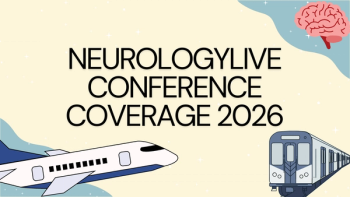
Patients With Essential Tremor Experience High Economic Burden
A budget impact analysis suggested that Cala Health’s Cala Trio device can serve as a cost-saving treatment option for patients with ET.
In addition to highlighting economic burden, the posters presented also revealed the high prevalence of multiple comorbidities in patients with ET that vary among patients undergoing different approaches to therapy. A budget impact analysis suggested that Cala Health’s lead product, Cala Trio, is a cost-saving treatment option for patients with ET. Cala Trio is the only non-invasive, wrist-worn prescription therapy currently available for ET.
“Results from the retrospective analyses provide clear evidence that psychiatric disorders and multiple comorbidities are highly prevalent among patients with ET and that, in addition to the clinical burden that ET imposes on patients, this disease is a source of substantial HCRU costs,” Kate Rosenbluth, PhD, founder and chief scientific officer, Cala Health, said in a statement. “The data show that while surgery was a significantly bigger driver of healthcare costs than pharmacotherapy, the presence of eight or more comorbidities was the single largest factor for an increased cost.”
High Rates of Comorbidities Observed in ET
Three posters regarding ET were presented by Cala Health, 2 of which showcase results from retrospective cohort studies conducted using administrative claims data from a US healthcare payer. These data included 15 million covered lives, including 5286 patients with ET. The database included patient demographics and comorbid conditions assessed using all data within 6 months before the index date (the first claim with evidence of ET). Of these patients, 26.0% were untreated, 71.3% received some pharmacotherapy, and 2.7% had refractory surgery during the 12-month follow-up period.
READ MORE:
The patients in the database had a mean age of 70.8 years; 49.1% were women, 17.1% had commercial insurance, and 82.9% had Medicare Advantage. Patients that received refractory surgery had a mean age of 67.2 years compared to 72.0 years in untreated patients and 70.5 years in patients treated with pharmacotherapy (P <.0001). A greater proportion of these patients were female (69.7%) compared to 45.6% of untreated patients and 49.7% of patients treated with pharmacotherapy (P <.0001). These patients also had smaller overall comorbidity burdens (3.7), as assessed by age-adjusted Charlson Comorbidity Index, compared to 4.3 in untreated patients and 4.4 in patients treated with pharmacotherapy (P = .0161).
Overall, patients had an average of 5.4 comorbidities (untreated, 4.8; pharmacotherapy, 5.5; surgery, 5.5; P <.0001). The most common psychiatric disorders before and after ET diagnosis were depression, anxiety, stress adjustment disorders, and substance abuse. Prevalence of psychiatric disorders varied based on age, time of diagnosis, and treatment type.
ET-Related Treatments Significantly Increase Healthcare Costs
The aforementioned data were presented in the first poster, while the second presented an estimate of treatment patterns, HCRU, and healthccare costs using data within 12 months after the index date. This poster revealed that 41.8% of patients had emergency department visits, 95.0% had specialist visits, and 29.5% had inpatient admission.
The average all-cause medical costs were $12,962 per patient per year (PPPY). Average pharmacy costs were $3892 PPPY, and total healthcare costs were $18,854 PPPY. ET-related costs made of 8.1% of the total costs ($1386 PPPY) and ET-related treatments significantly increased total healthcare costs from $12,900 PPPY in untreated patients to $17,916 PPPY in patients treated with pharmacotherapy and to $29,328 PPPY in patients treated with surgery (P <.0001). Overall, the number of comorbidities, type of treatment, and presence of psychiatric disorders were major drivers of healthcare costs and surgery had a significantly larger impact on healthcare costs compared with pharmacotherapy.
Cala Trio: A Cost-Saving Treatment for ET
The third poster presented was a budget impact analysis that reported results from a cost minimization model to calculate that aimed to calculate the 3-year impact of introducing Cala Trio therapy to a cohort of 1 million people. Economic impact was calculated based on an alternative scenario in which 3% of patients from each treatment received Cala Trio therapy.
The analysis demonstrated that while the annual cost of Cala Trio is comparable to high-dose, first-line pharmacotherapies, these costs are lower and less variable over 3 years compared to the cost of therapy, dosing, and side effects of existing pharmacotherapies and surgical and non-reversible ablative procedures offered in the US. Furthermore, the analysis found that adopting Cala Trio would have a minimal budget impact in the health care plan of the 1 million patients in the cohort. The study authors concluded that Cala Trio is a fixed- and low-cost, on-demand therapy that is a safer and effective treatment for patients with ET.
“The budget impact data presented at ISPOR clearly demonstrate that the ET patient population is complex and improving outcomes for these patients requires a holistic and individualized approach that addresses underlying comorbidities and treatment patterns,” said Ali Samiian, senior director, reimbursement, Cala Health, and co-author of the 3 posters presented at ISPOR. “These data demonstrate that Cala Trio is a cost-saving option compared with pharmacotherapy or surgery for treating ET - the most common movement disorder, which affects 7-10 million individuals in the United States alone - and provide compelling evidence that support reimbursement of this innovative therapy.”
REFERENCE
Cala Health reports new data presented at ISPOR, highlighting essential tremor (ET)-related comorbidities and economic burden. News release. Cala Health. May 20, 2021. Accessed May 20, 2021.https://www.businesswire.com/news/home/20210520005360/en/Cala-Health-Reports-New-Data-Presented-at-ISPOR-Highlighting-Essential-Tremor-ET--Related-Comorbidities-and-Economic-Burden
Newsletter
Keep your finger on the pulse of neurology—subscribe to NeurologyLive for expert interviews, new data, and breakthrough treatment updates.




























